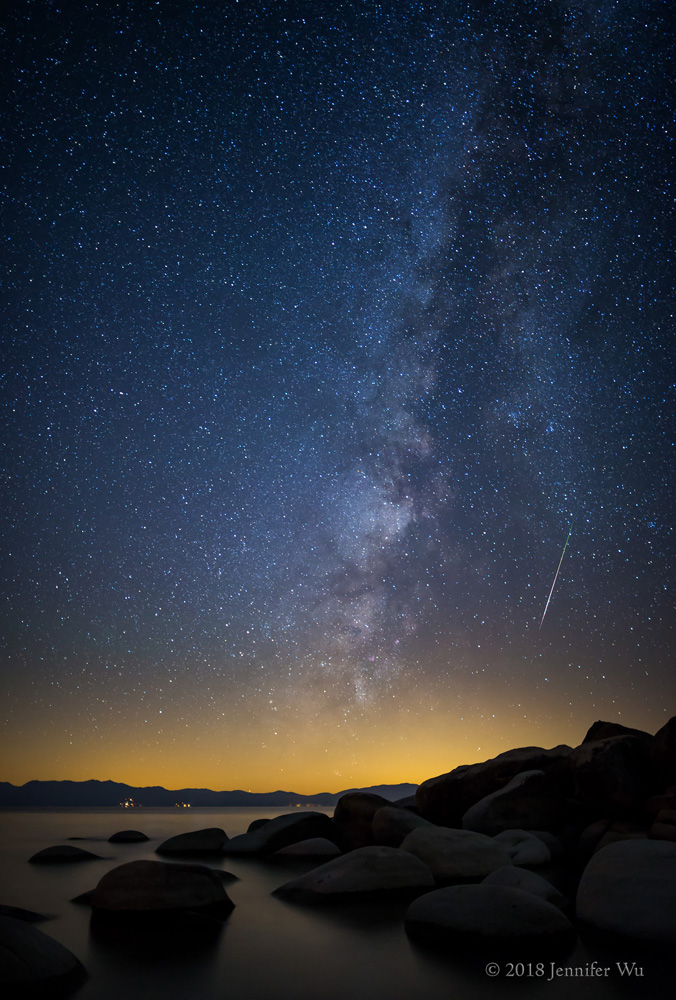Meteor over Lake Tahoe photographed at f/1.4, 20 seconds, ISO 1250, 24mm lens, Canon 5D mark II. Photographing meteors are much like photographing stars as points of light. It might seem like a good idea to have a longer shutter speed to be sure to capture the meteor however the longer exposures, such as those done with star trails, make the meteors appear faint. Be sure to get away from city lights to someplace dark. Check the weather for clear skies. Here are a few more tips.
What Settings to Use?
Photograph meters using the same techniques as photographing stars as points of light. Use a wide-angle lens and set it to a wide open aperture such as f/2.8. Then set your shutter speed between 15-30 seconds. If you see stars as lines when reviewing the images on the LCD screen then use a faster shutter speed. Set the ISO to 3200 to 6400 on a dark night (depends on how much moon light is available) to make sure to get a good exposure. Be sure to focus on the stars. The easiest way is auto focus on a distant object during the day and tape the lens or focus on the moon at night. Be sure turn off the auto focus so it doesn’t change. Using live view is another way.
Where to look?
Look toward the direction of where the meteor showers are coming from. For Camelopardalis/Giraffe look to the North. For the Perseids meteor shower generally around Aug 12 look to the Northeast around 11 pm. Keep in mind that the meteors can happen from any direction.
Being Prepared Favors a Great Shot!
When I tried photographing meteors I found I missed many shots because I was fiddling around. I was pointing the camera in the wrong direction, changing a lens or recomposing. Now I take an intervalometer and set it to take photographs continuously so that I am likely to get a shot. I use the Canon Timer Remote Controller TC-80N3, set to two-seconds between shots and then I let it do the work. I sit back and watch the show. I delete all the images later that don’t have any meteors. I just love digital. I would have never done that back in the days of shooting film.
What if I Don’t See Any Meteors?
If you don’t see any meteors, you can still take some shots of the night sky and stars as points of light. In May look for the Milky Way in the morning hours before dawn. For August, we are looking through the mass of the Milky Way throughout the night starting after dusk. Look for a band of white light in the sky. The camera will pick up the colors and gasses our eyes can’t see!
Have fun. I hope you catch a shooting star! Jennifer
Check Out the Book
Photography Night Sky: A Field Guide for Shooting After Dark.
Print edition and Kindle or More Info


